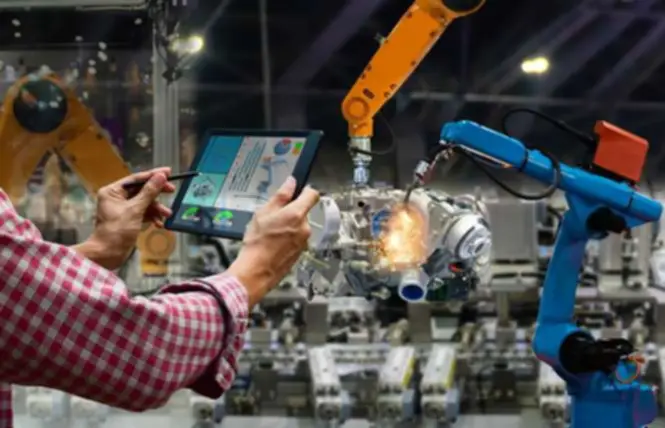Whether the feedback are constructive or negative, customer suggestions and involvement results in usability improvements and overall customer satisfaction. In summary, steady integration cuts down the combination section at the end of the project, permitting continuous delivery maturity model you to troubleshoot any issues earlier. The group has to spend fewer sources reviewing their work and backtracking to repair bugs.
Strategies To Overcome Adoption Challenges
Orchestration tools join processes to ensure that builders observe all crucial steps before pushing new modifications to manufacturing. These instruments combine with configuration administration processes to ensure proper provisioning and the highest performance level in all project environments. The continuous integration/continuous delivery (CI/CD) pipeline is an agile DevOps workflow targeted on a frequent and reliable software program supply course of. The methodology is iterative, quite than linear, which permits DevOps teams to write down code, integrate it, run checks, ship releases and deploy adjustments to the software program collaboratively and in real-time. But if you already have an current utility with clients you need to slow issues down and begin with continuous integration and continuous delivery.
It Infrastructure Audit With Check-list

Continuous Delivery’s guide step is the answer for organizations that must balance speed and reliability; it works nicely in environments the place stability and coordination with enterprise processes are crucial. Financial institutions and healthcare providers typically choose Continuous Delivery due to the important nature of their software program. With a CI/CD development course of, teams prioritize proposed modifications as they arrive in, working on areas which have the biggest profit to the group. Each area is, by definition, a smaller element in comparison with a Waterfall model change. Teams can plug the code adjustments into the prevailing code and then perform more particular functionality and integration exams, making certain that the model new code doesn’t have any undesirable downstream impacts. The finest method to institute DevOps methodology within your group is by building out a CICD pipeline.

Automation Of The Deployment Course Of
In the primary stage, you could have CI, which builds and tests code modifications to features and bug fixes. CD goes further and implements newly developed software codes within the software program software. This strategy emphasizes automation and collaboration, permitting groups to launch delivering software quicker, with better quality, and in a extra environment friendly method. With the rising demand for faster and more frequent software program updates, steady supply is well-poised to become the trade standard. Modern development teams can ship critical software program updates quicker and more effectively with steady integration and deployment.
Continuous integration and continuous supply are central to DevOps-driven organizations. The only drawback of implementing CI is that getting started with CI/CD requires both improvement teams and operational groups to debate what they want, how it’s executed, and the applied sciences they’ll want. The two groups have to give you a consensus on these issues earlier than CI/CD may be put into place. Once it’s, the group wants to take care of this settlement in order that the new CI/CD process can be followed diligently. In the previous, developers labored in isolation for a protracted time earlier than merging their changes again to the grasp branch.
- But in case your project can afford an extended improvement cycle, and quality or safety is the top priority, traditional growth would possibly provide the oversight to launch a extra polished product.
- My intention isn’t to dissuade initiatives from implementing CI/CD pipelines—quite the opposite.
- A pipeline that’s automated for releases allows for a “fail fast” approach and the tests which may be most probably to fail first are those which are run first.
Organizations can maximize the advantages of continuous deployment by investing in automated testing, monitoring, and alerting, as nicely as adopting effective deployment strategies and instruments. Additionally, fostering a tradition of collaboration, continuous enchancment, and successfully leveraging automation throughout infrastructure and processes are key. By addressing these challenges, DevOps groups can make positive the success and sustainability of their continuous deployment initiatives, staying aggressive and meeting evolving user calls for. The deployment course of can take a step further with continuous deployment — completely freed from human interference.

Continuous integration is the inside doll; steady deployment is the outer doll. That’s why steady integration and steady deployment (CI/CD) are often talked about together and in that order. The world eCommerce site delivers app and web site updates each 20 minutes with minimal disruption to the operations of those channels. Continuous supply and steady deployment are sometimes used interchangeably, but there’s a difference between the 2. A real-life example of a company using steady integration is Buzzfeed.
With a sturdy CD pipeline, teams can shortly iterate and adapt, guaranteeing optimal performance and efficiency of the product at all times. Whether your staff integrates continuous supply or continuous deployment into the CI/CD pipeline, each are nice practices to make sure your team at all times stays updated on releases and keeps the shoppers happy. Both steady deployment and steady delivery rely upon real-time infrastructure and application monitoring tools to maintain the product and uncover any issues that had not been discovered earlier than launch. Developers should use the suitable instruments to develop and deploy high-quality software program improvements repeatedly. This course of builds effective DevOps practices by making certain efficient communication between developmental and operational departments.

As DevOps reduces the time for failure response considerably, each business ought to comply with this strategy. In reality, there is not a clear set of solutions to the query of what DevOps means. However, it is denoted as a set of approaches to automate and facilitate the software program improvement process between the development and different members of the team.
Or is it a a lot bigger, more complex project with set phases and clear deliverables where stability is key? If you are constructing something like a startup product or a cellular app the place suggestions must be carried out rapidly, CI/CD’s fast iterations and automatic testing could be good. If you’re engaged on a large enterprise system that calls for heavy documentation and strict approval processes, conventional improvement would possibly supply the soundness needed. Successfully incorporating continuous supply into your software development process requires a strategic approach.
Continuous deployment is a method in software program improvement where code modifications to an utility are launched mechanically into the manufacturing setting. Therefore, DevOps comes with a important profit in the present business environment. It holds the pride of being a technique that would make teams work sooner with higher frequency by way of DevOps and adaptive info know-how.
The key’s making sure safety and developer teams talk and work together to grasp their different priorities and goals. As we’re discussing DevOps advantages and disadvantages, one of the greatest advantages that you must be aware of is that this technique increases overall agility and efficiency in your corporation. With agility, your business will become rapidly reactive and can start responding to the business wants. Agility typically comes off as a precondition for any business if one needed to be on the successful aspect of disruption and the opposite on the demise of the day. The hole between failure and success could be as tiny as the release of an upgrade.
Organizations can overcome this by implementing complete monitoring and alerting instruments that provide visibility into the well being of purposes and techniques. These instruments ought to be able to detecting anomalies, performance dips, and failures, ensuring groups can respond rapidly to minimize disruption. Establishing clear thresholds for alerts and sustaining a clear alerting technique are essential for proactive problem decision. Enables sooner feedback loops from customers as changes are deployed shortly.
Transform Your Business With AI Software Development Solutions https://www.globalcloudteam.com/ — be successful, be the first!
